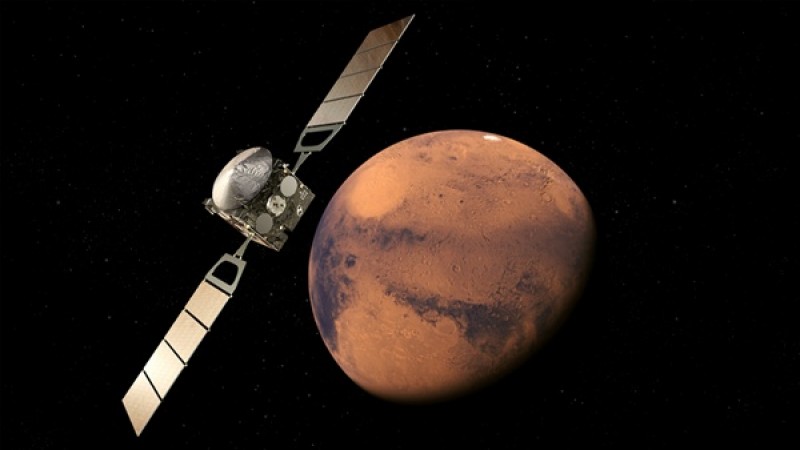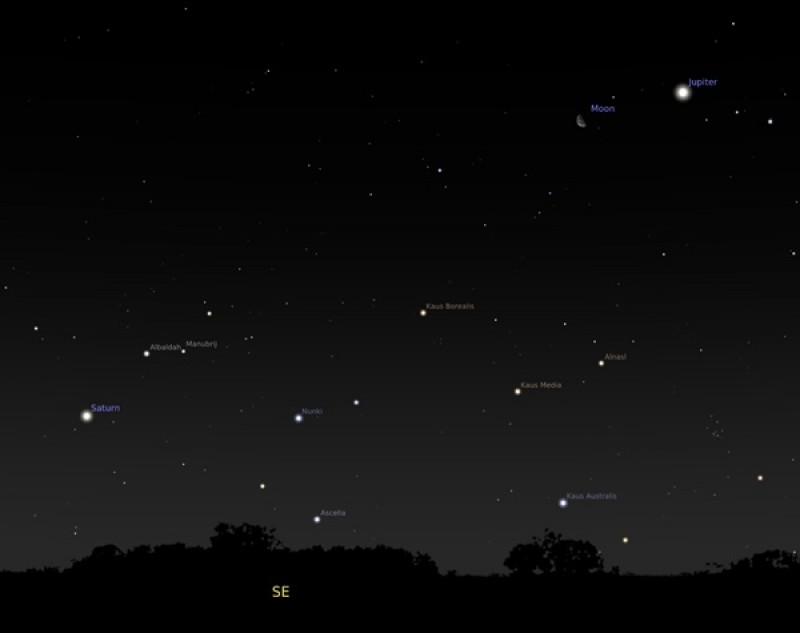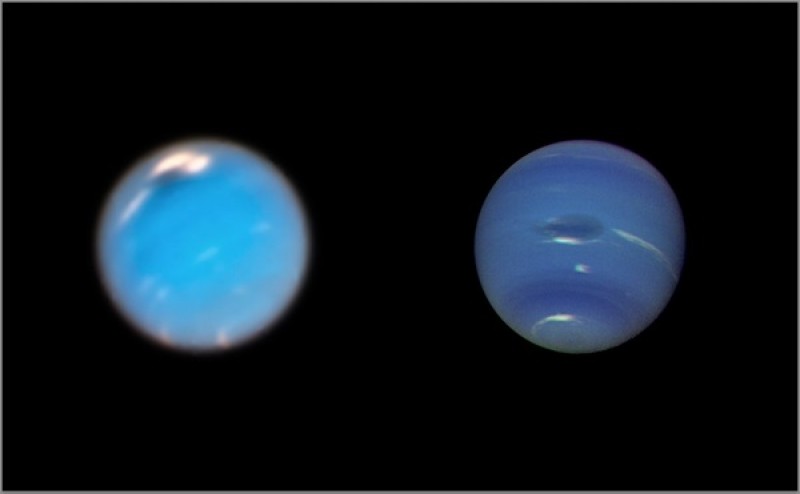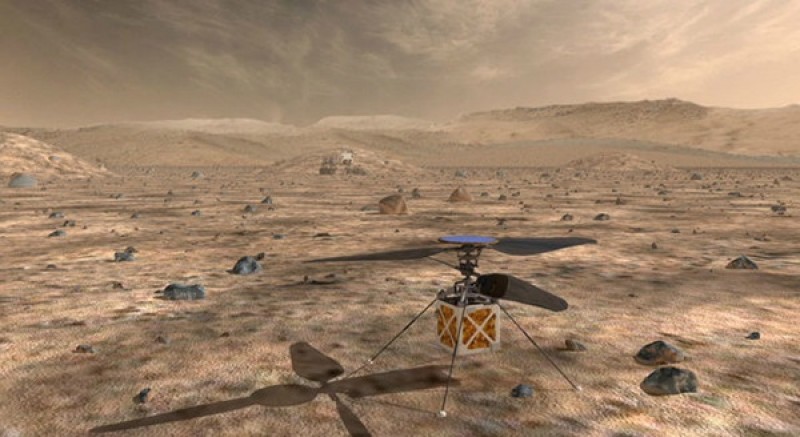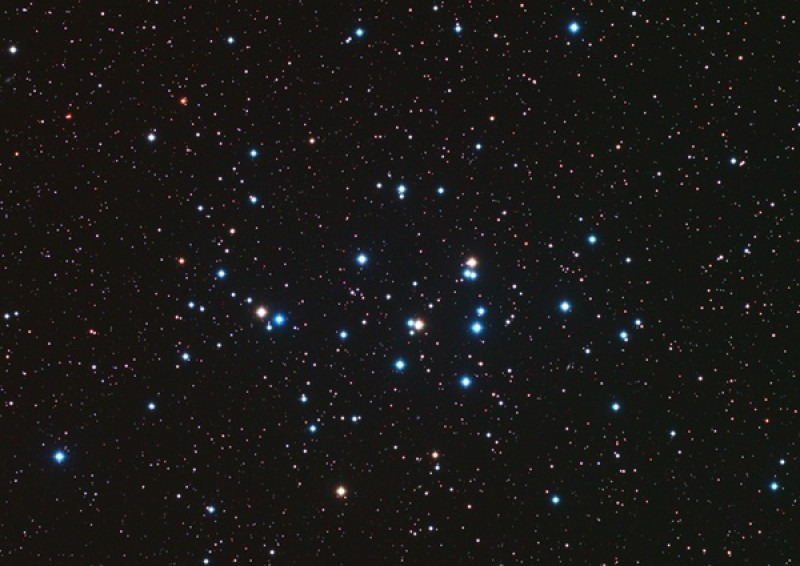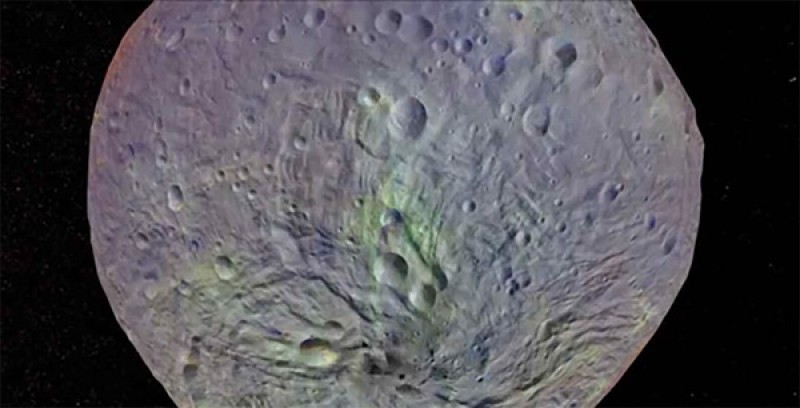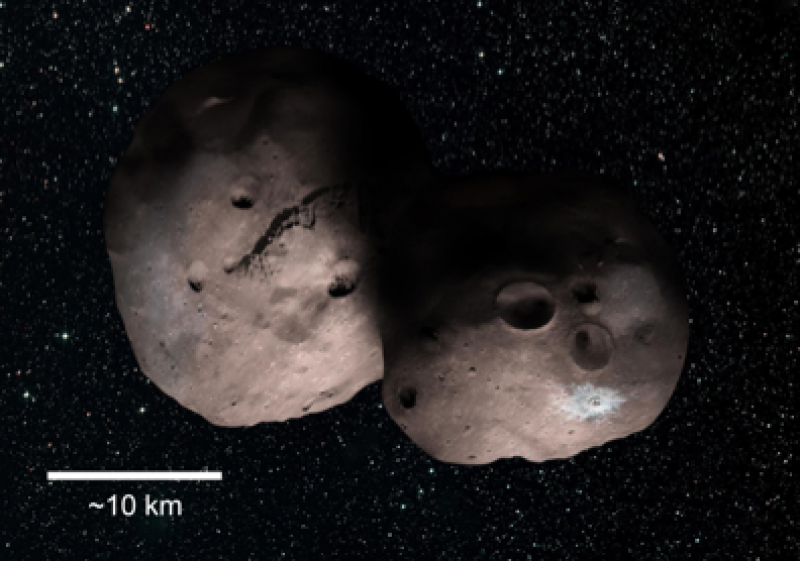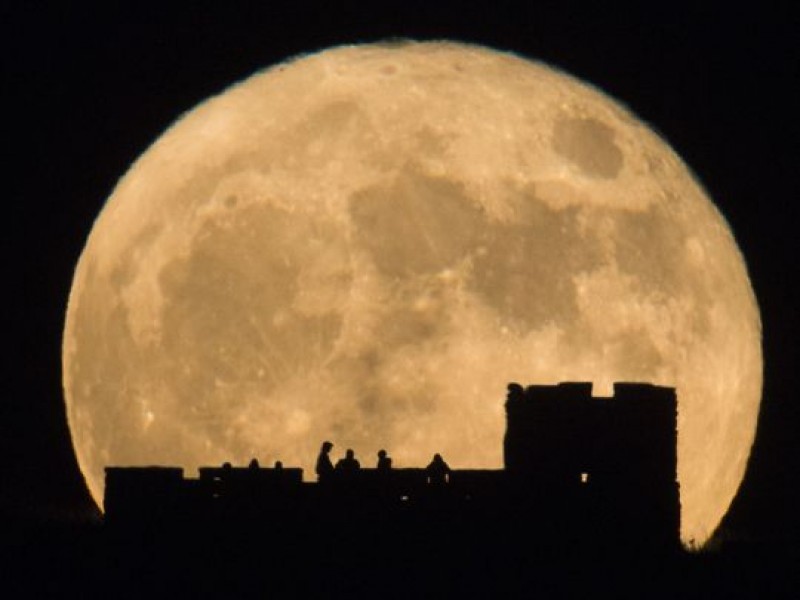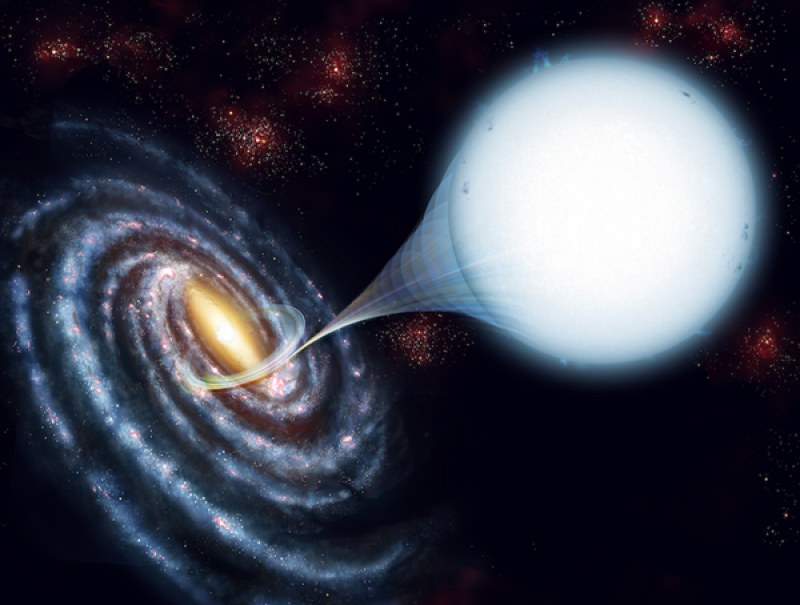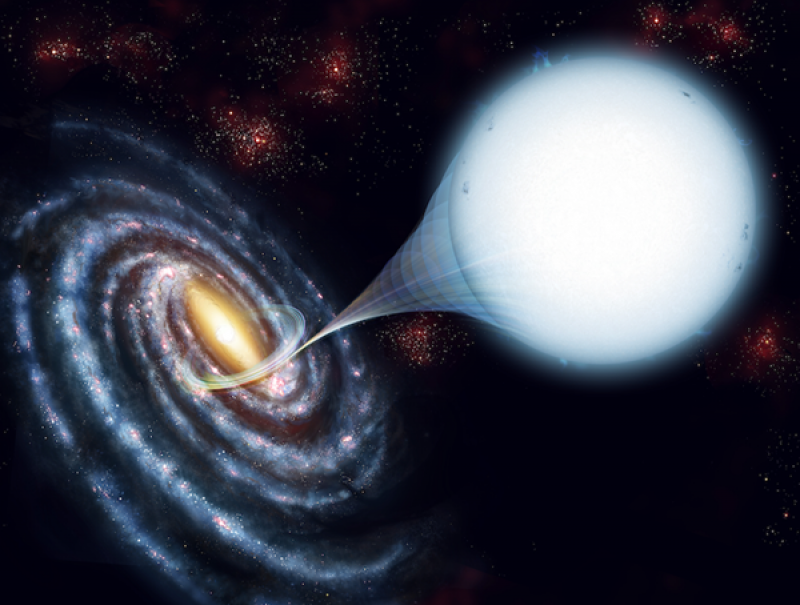News
Astronomers finally confirm methane on Mars
Tuesday, April 2nd 2019 06:50 PM
Researchers have independently confirmed, for the first time, the detection of methane on Mars. For fifteen years, various research groups have claimed to see traces of methane in Mars’ atmosphere. Intriguingly, these often appear as puffs of gas that appear and disappear over short timescales. Groups have hotly debated whether the methane might be evidence of life, or merely geologic processes. Other researchers have argued whether the methane truly exists at all, or if the detections are merely errors.
Now, a group using data from the European Space Agency’s Mars Express spacecraft says they identified methane above Gale Crater on June 16, 2013, just one day after NASA’s Curiosity rover noticed a methane spike from the ground in Gale Crater. This marks the first confirmed finding of an important substance in the hunt for life on the Red Planet.
Hard to spot
Researchers, led by Marco Giuranna from the Istituto Nazionale di Astrofisica in Rome, used...
Read More
Read More
The Moon points to two bright planets this week
Wednesday, March 27th 2019 06:56 PM
Since last week’s Full Moon, Earth’s satellite has been rising later every night. You now have to wait until after midnight local daylight time to see Luna cresting above the southeastern horizon. But for those who like to get up early, or stay up really late, the Moon offers a couple of treats these next few mornings.
On March 27, the Moon rises in the vicinity of brilliant Jupiter. The two come up shortly before 2 a.m. and then climb higher as morning progresses. The planet appears about 4° to the waning gibbous Moon’s right, and the two fit nicely in a single field of view through binoculars. You won’t mistake magnitude –2.2 Jupiter for any other celestial object — it’s the brightest point of light in the night sky with the exception of Venus, which won’t rise until morning twilight has started.
The Moon moves eastward relative to the background stars at an average of 13° every day. In just two days, on the morning of March 2...
Read More
Read More
Hubble catches Neptune forming new, massive storms
Tuesday, March 26th 2019 08:57 PM
Neptune has a new storm, in the form of a large dark spot that appeared in late 2018. By analyzing Hubble images dating back to 2015, astronomers have discovered high-altitude clouds that formed years ahead of the visible storm, indicating it was already forming there, swirling beneath the clouds and haze. The telltale clouds are teaching astronomers more about how such storms form and evolve on all the giant outer planets.
Birth of a storm
Neptune, like all the outer solar system planets, forms large and durable storms. While Jupiter’s Great Red Spot is infamous, Neptune’s dark blue spots were unknown until Voyager 2 flew past in 1989, sending back pictures of two large storms on its surface. Jupiter’s Great Red Spot has been visible for at least 190 years, and possibly since the 1600s. But when Hubble peered at Neptune in 1994, its storms had already vanished.
Since then, Hubble has spotted dark storms appearing and disappearing on Neptune, lasting only...
Read More
Read More
NASA is sending a helicopter to Mars
Monday, March 25th 2019 07:27 PM
When the Mars 2020 rover lands on the Red Planet in early 2021, it will carry with it a small helicopter, the first human craft to fly on another planet. Until now, Mars has hosted orbiters, landers, and rovers, but no flying machines. The Mars helicopter is meant only as a technology demonstration. If it doesn’t work, the Mars 2020 mission will still succeed. If it does, it will have opened up entirely new avenues for exploring other worlds.Into the Wild Red Yonder
While helicopters are old technology on Earth, flying one on Mars will be challenging. Thanks to Mars’ thin atmosphere, a helicopter flying just above the surface is already at the equivalent of 100,000 feet Earth altitude, far beyond where helicopters or even typical planes fly. The altitude record for a helicopter on Earth is only 40,000 feet. And even consumer drones on Earth can struggle at high altitudes.So NASA engineers at the Jet Propulsion Laboratory had to make a craft that was both inc...
Read More
Read More
The Sky This Week from March 22 to 31
Friday, March 22nd 2019 05:47 PM
Friday, March 22March evenings offer an excellent chance to see the zodiacal light. From the Northern Hemisphere, late winter and early spring are great times to observe this elusive glow after sunset. It appears slightly fainter than the Milky Way, so you’ll need a clear moonless sky and an observing site located far from the city. With the waning gibbous Moon now exiting the early evening sky, prime viewing conditions extend from tonight through April 6. Look for the cone-shaped glow, which has a broad base and points nearly straight up from the western horizon, after the last vestiges of twilight have faded away.Saturday, March 23Mars continues to put on a nice show these March evenings. It appears more than 30° high in the west once twilight fades to darkness and doesn’t set until after 11 p.m. local daylight time. The magnitude 1.4 Red Planet crosses the border from Aries the Ram into Taurus the Bull today, setting up a dramatic conjunction with the beautiful Ple...
Read More
Read More
It turns out this Turkish meteorite is a free sample from asteroid Vesta
Thursday, March 21st 2019 06:18 PM
Twenty-two million years ago, something crashed into the asteroid Vesta, carving out a large crater and throwing the debris high into space. In 2015, a three-foot meteor streaked through the sky above Turkey before fragmenting into pieces and falling near a village called Sariçiçek. Scientists who studied a whopping 343 pieces of the recovered meteorite now think it originated in that long-ago collision on Vesta.
Connecting the Pieces
Vesta is the second-largest object in the asteroid belt, second only to the dwarf planet Ceres. Back in 2011 and 2012, asteroid researchers became very familiar with Vesta, when NASA’s Dawn spacecraft visited and collected extensive images and data about the object, including its many craters from where smaller asteroids crashed into it other the eons. Researchers use the layering of craters and the spray of material around them to judge the ages of craters. This is how they were able to date the Antonia impact crater to...
Read More
Read More
What are tholins? The mysterious substance that turned Ultima Thule red
Wednesday, March 20th 2019 05:55 PM
On New Year’s Day, NASA’s New Horizons probe streaked by a tiny world dubbed MU69, or Ultima Thule, the farthest object humankind has studied up close. With most of the data still on the spacecraft waiting to be transmitted, scientists are still getting to know this distant body. We know that it’s composed of two chunks of rock loosely stuck together. We know that it doesn’t have moons or rings that New Horizons might have careened into on its close pass. And we know Ultima Thule is red.Carly Howett, a member of the New Horizons team, said that if you were standing on New Horizons as it sped past, Ultima Thule would appear red to the human eye and very dark. But with the aid of enhanced imagery, it’s also clear that some patches are redder than others, like the rim of the large crater known as Maryland.That redness is likely caused by a mysterious class of compounds called tholins, the New Horizons team said Monday during a mission update...
Read More
Read More
Supermoon, first day of spring are an astronomical doubleheader coming Wednesday
Tuesday, March 19th 2019 05:28 PM
We've got a doubleheader of astronomical action Wednesday: The spring equinox, which marks the beginning of spring, along with the final "supermoon" of the year.
Both will occur on Wednesday: The equinox at 5:58 p.m. EDT and the full moon/supermoon less than four hours later at 9:43 p.m. EDT, EarthSky reported.
The equinox is the precise moment the sun's rays shine directly on the equator.
It's one of two days out of the year – the other being the autumnal equinox in September – when the Earth's axis is tilted neither toward nor away from the sun, resulting in roughly 12 hours of daylight and 12 hours of darkness almost everywhere on Earth.
So it's an "equal night," which is where the word equinox originated: the two Latin words aequus (equal) and nox (night), according to the National Oceanic and Atmospheric Administration. Each day for the next three months, the sun will continue to get higher in the sky – and t...
Read More
Read More
How high-speed stars escape the galaxy
Friday, March 15th 2019 07:17 PM
Stars bob and weave in and out of the Milky Way Galaxy’s spiral arms like cars speeding through rush-hour traffic. But a snapshot of the nighttime sky makes it appear that these luminaries are as fixed as the great pyramids of Egypt. Of the estimated 200 billion to 400 billion stars that call our galaxy home, however, a tiny fraction of hot, massive ones stand out. Gravitational interactions have revved them up to speeds double or even triple that of the Sun. These so-called hyper­velocity stars race through the Milky Way so quickly that they are destined to break free of the galaxy’s gravitational embrace.Our local solar neighborhood is in constant motion, participating in a mostly orderly flow shared by the vast majority of the stars revolving around the Milky Way’s center. But a small number of fast-moving suns break this overall pattern. Astronomers often find these “runaway stars” fleeing youthful clusters.Hypervelocity stars take these speeds...
Read More
Read More
This speeding star is escaping our galaxy — and it’s not like the others
Thursday, March 14th 2019 07:18 PM
The Milky Way Galaxy contains billions of stars. Though the vast majority of these are bound to the galaxy by gravity, astronomers have found a few tens of stars that are not orbiting but instead fleeing our galaxy at extreme speeds. These hypervelocity stars have intrigued researchers for years, and now a new mysterious player has entered the game. LAMOST-HVS, the closest of these fast-moving stars to our Sun, has an origin story markedly different from the way we believed these stars get their kick out of the Milky Way. In a study led by researchers from the University of Michigan and published March 12 in the Astrophysical Journal, astronomers used data from the Magellan telescope in Chile and the European Space Agency’s Gaia satellite to wind back the clock and trace the trajectory of LAMOST-HVS, an 8.3-solar-mass star zipping away from the galaxy at more than 350 miles per second (568 kilometers per second). LAMOST-HVS is the closest hypervelocity star...
Read More
Read More
